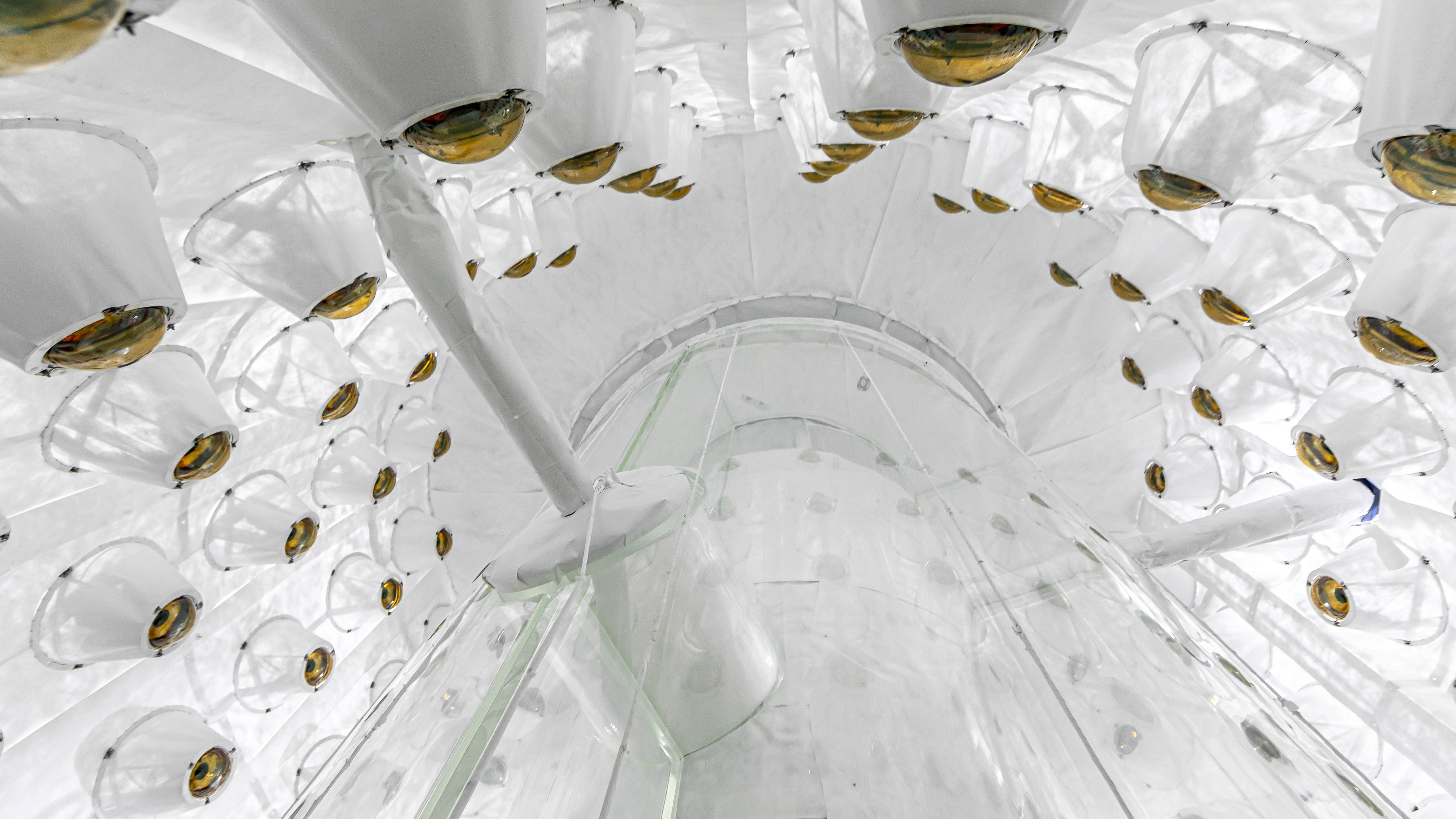
Under the Black Hills of South Dakota a uniquely sensitive dark matter detector has passed a check-out phase of startup operations and delivered its first results, the culmination of the work of an international team that includes three researchers from The University of Alabama.
Three researchers from the UA Department of Physics and Astronomy, Drs. Andreas Piepke, professor; Ion Stancu, professor; and Ryan Wang, assistant professor, are part of 250 scientists and engineers from 39 institutions collaborating on the LUX-ZEPLIN, or LZ, experiment led by Lawrence Berkeley National Lab at the Sanford Underground Research Facility in South Dakota.
Dark matter particles have never been detected — but perhaps not for much longer. The countdown may have started with results from LZ’s first 60 “live days” of testing. These data were collected over a three-and-a-half-month span of initial operations beginning at the end of December. This was a period long enough to confirm that all aspects of the detector were functioning well.
Results from the initial run are available on the online preprint archive.
Unseen, because it does not emit, absorb or scatter light, dark matter’s presence and gravitational pull are nonetheless fundamental to understanding the universe. For example, the presence of dark matter, estimated to be about 85 percent of the total matter in the universe, shapes the form and movement of galaxies, and it is invoked by researchers to explain what is known about the large-scale structure and expansion of the universe.
The heart of the dark matter detector is comprised of two nested titanium tanks filled with 10 metric tons of pure liquid xenon and viewed by two arrays of photomultiplier-type light detectors able to detect faint light flashes following interactions with sub-atomic particles.
Piepke participated in the multi-lab radioactivity screening program of detector materials to ensure every component met the demanding radioactivity requirements for dark matter searches. In addition, his group assembled, tested and characterized the neutron calibration sources for LZ, which help to understand the response of the detector to the nuclear recoil type interactions, mimicking dark matter interactions in the xenon.

Stancu established the data analysis and simulation software management system, which integrates all analysis and simulation code for researchers worldwide. Moreover, he contributed to several simulations and analysis tasks, leading to the first results.
Wang was stationed at the Sanford Underground Research Facility, or SURF, and his work is essential for the understanding of the measurement sensitivity of LZ.
He oversaw the assembly of the Time Projection Chamber, a radiation detector allowing full 3D reconstruction of the event location and the detector integration in the underground lab. He also led the installation of the neutron-tagging detector that identifies the otherwise indistinguishable neutron background signal. After joining UA last year, he became the coordinator for certain critical aspects of the data analysis.
“I’d like to second the praise for the team at SURF and would also like to express gratitude to the large number of people who provided remote support throughout the construction, commissioning and operations of LZ, many of whom worked full time from their home institutions making sure the experiment would be a success and continue to do so now,” said Tomasz Biesiadzinski of SLAC, the LZ detector operations manager.
This article was written by Kellie Hensley with the UA College of Arts and Sciences and adapted from an article from the Lawrence Berkeley National Lab.
